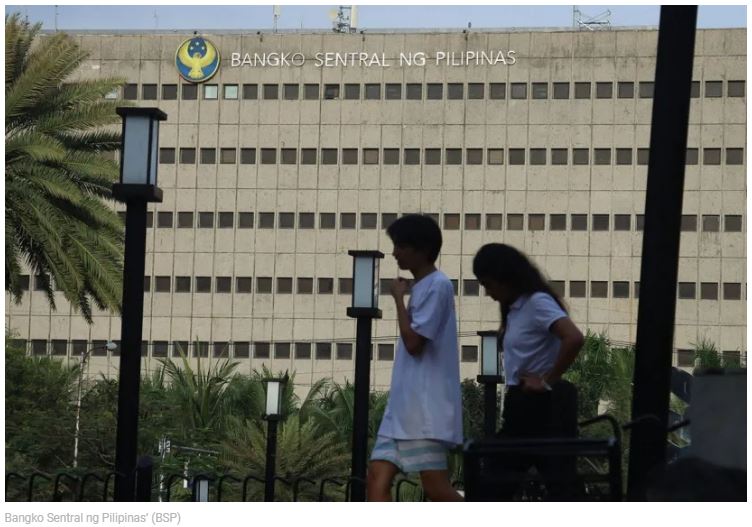Philippines: ‘BSP will need to stay hawkish’
MONETARY authorities will have to continue raising interest rates after inflation spiked to a higher-than-expected 8.7 percent in January, analysts said.
The Bangko Sentral ng Pilipinas’ (BSP) policymaking Monetary Board may have to deliver another 50-basis-point (bps) increase next week instead of the 25 bps initially expected, two economists added.
This would raise the policy rate to 6.0 percent, from 5.5 percent currently, much earlier than previously forecast.
The consensus among analysts was that consumer price growth would slow to 7.6 percent, and the Bangko Sentral ng Pilipinas (BSP) last week said inflation could have either dropped to 7.5 percent or picked up to no more than 8.3 percent.
The January result was the highest in a little over 14 years, or since November 2008’s 9.1 percent. It topped last December’s 2022 peak of 8.1 percent and was significantly higher than the 3.0 percent posted a year earlier.
“Electricity and vegetables, particularly onions, were the top contributors to January inflation, each accounting for 1.1 percentage points (ppt),” the National Economic and Development Authority (NEDA) said in a statement.
Robert Dan Roces, an economist and Security Bank Corp. assistant vice president, said poor agriculture output and high energy costs were the prime drivers of inflation.
While the NEDA claimed that domestic demand appeared to be easing, boding well for slower price growth, he said that January inflation was also fueled by sustained economic activity which led to higher demand for goods and services.
“Recreation (+4.2 percent), restaurants and accommodations (+7.6 percent), and personal care (+5.0 percent) prices all went up, suggesting revenge spending isn’t waning anytime soon,” Roces said.
“With the headline and core inflation remaining high, our base case is for the BSP to continue increasing policy rates at a slower rate of 25 basis points per meeting in February and March because of reduced FX (foreign exchange) market pressures, a slower pace of Fed hikes, and the need to address elevated food prices by non-monetary means,” he added.
However, given the likelihood of an even higher February print, Roses said that there was now a greater likelihood that the BSP could opt to front-load a 50-bps hike.
Nicholas Antonio Mapa, senior economist at ING Bank Manila, also said the Monetary Board could whip out a 50-bps-rate increase in an attempt to get ahead of surging inflation.
“[BSP Governor Felipe] Medalla previously sounded off on the possibility of pausing ‘as early as the first quarter’ but today’s (yesterday’s) inflation report likely means BSP will need to stay hawkish in the near term,” he said.
Mapa noted that the BSP increased rates on consumer credit last January, which could act as an additional tightening measure to combat soaring inflation.
“Nevertheless, price pressures are broad-based and BSP will likely need to sustain rate hikes until we see inflation head back toward the target in a convincing manner,” he added.
Rajiv Biswas, APAC chief economist, S&P Global Market Intelligence, also said that rising costs for energy, including electricity, gas and other fuels, would “likely trigger further near-term monetary policy tightening by the BSP to contain inflation pressures.”
Michael Ricafort, chief economist at Rizal Commercial Banking Corp., likewise said that “relatively elevated inflation data… could support further local policy rate hikes still expected to match any future Fed rate hikes to maintain comfortable interest rate differentials to help stabilize the peso and overall inflation.”
The US Federal Reserve (Fed) last week raised its benchmark rate by 25 bps, easing from hikes of as much as 75 bps last year, as US inflation slowed in December. Last week, Medalla told reporters that monetary authorities would “focus on inflationary expectations in PH (the Philippines), not the Fed’s 25-bps-rate increase.”
While inflation will likely remain elevated, analysts still expect it to ease before the end of the year.
“I personally do not see double-digit inflation because stripping off the utilities costs previously mentioned, certain food items with heavy weights have somehow eased (like meat and rice),” Ruben Carlo Asuncion, chief economist at Union Bank of the Philippines, said.
“Nevertheless, I am not discounting the possibility of higher inflation, but our initial trajectory forecasts do not seem to point to such (at least not at this point),” he added.
Ricafort reiterated that in the coming months, base effects could lead mathematically to slower inflation.
Biswas, meanwhile, said that a recent moderation in world commodity prices from their 2022 peaks, notably for crude petroleum, “will also help to reduce headline CPI (consumer price index) inflation pressures in the months ahead.”
“The rebound of the Philippines peso against the USD (United States dollar) since mid-October will also help to trim import costs for commodities and raw materials, which should also contribute to easing pricing pressures,” he added.
The Monetary Board raised the BSP’s policy rate by a total of 350 bps last year after inflation breached the 2.0- to 4.0-percent target beginning April. Full-year consumer price growth subsequently averaged 5.8 percent, hitting the government’s upwardly revised assumption for 2022.
Economic managers expect inflation to average 4.5 to 5.5 percent this year before returning to the target range in 2024.
Source: https://www.manilatimes.net/2023/02/08/business/top-business/bsp-will-need-to-stay-hawkish/1877690


 English
English




